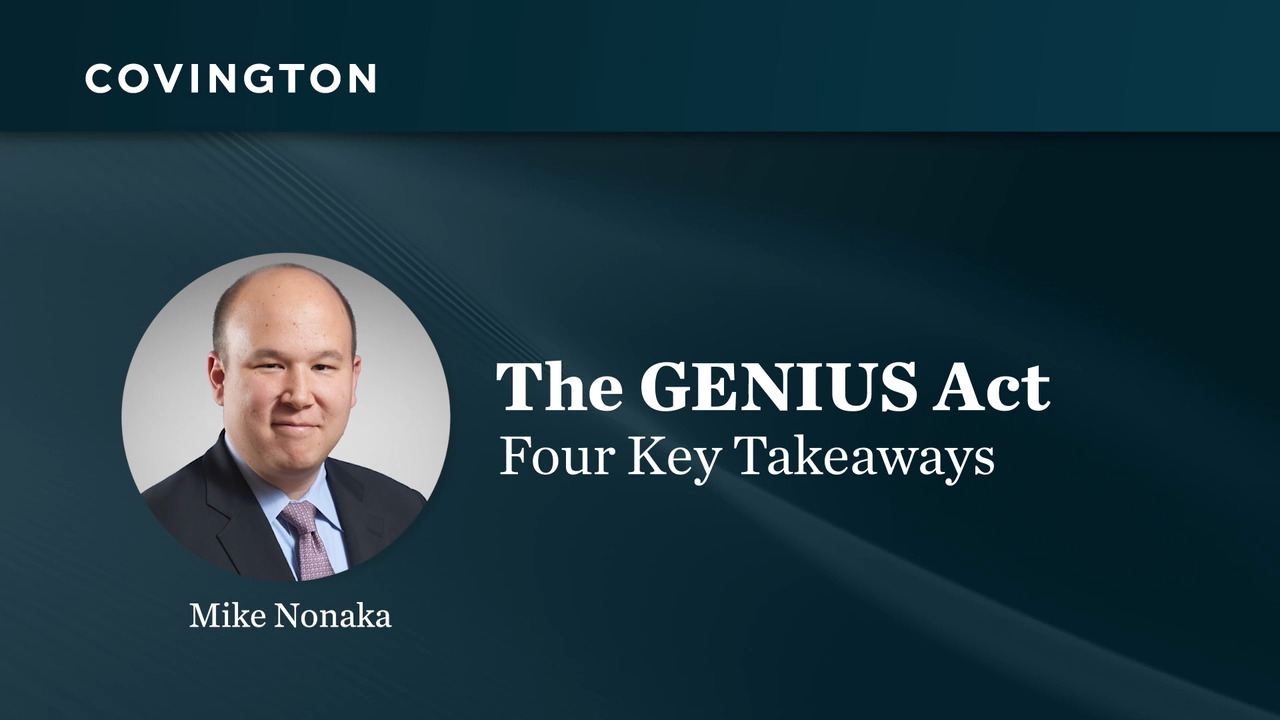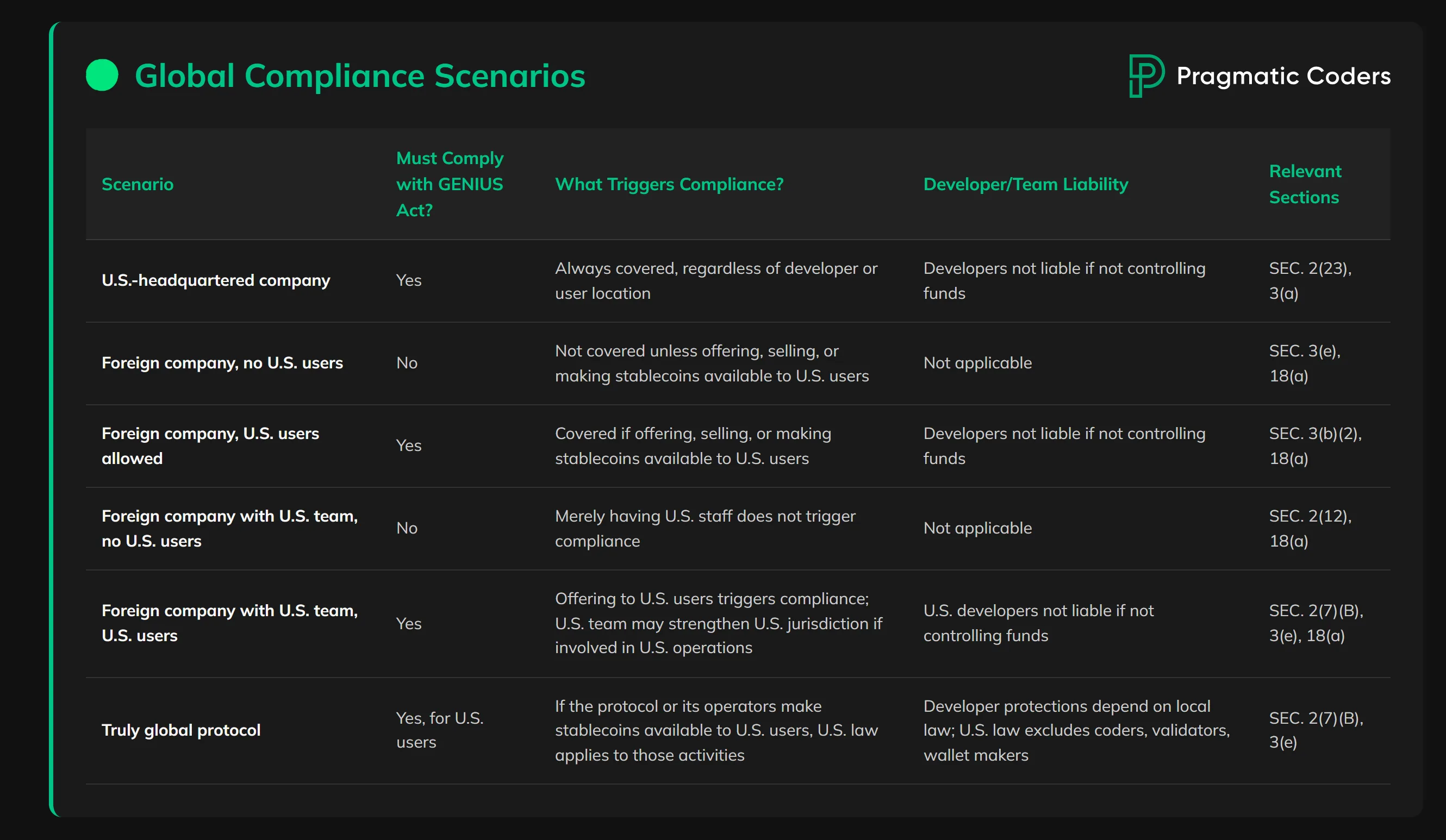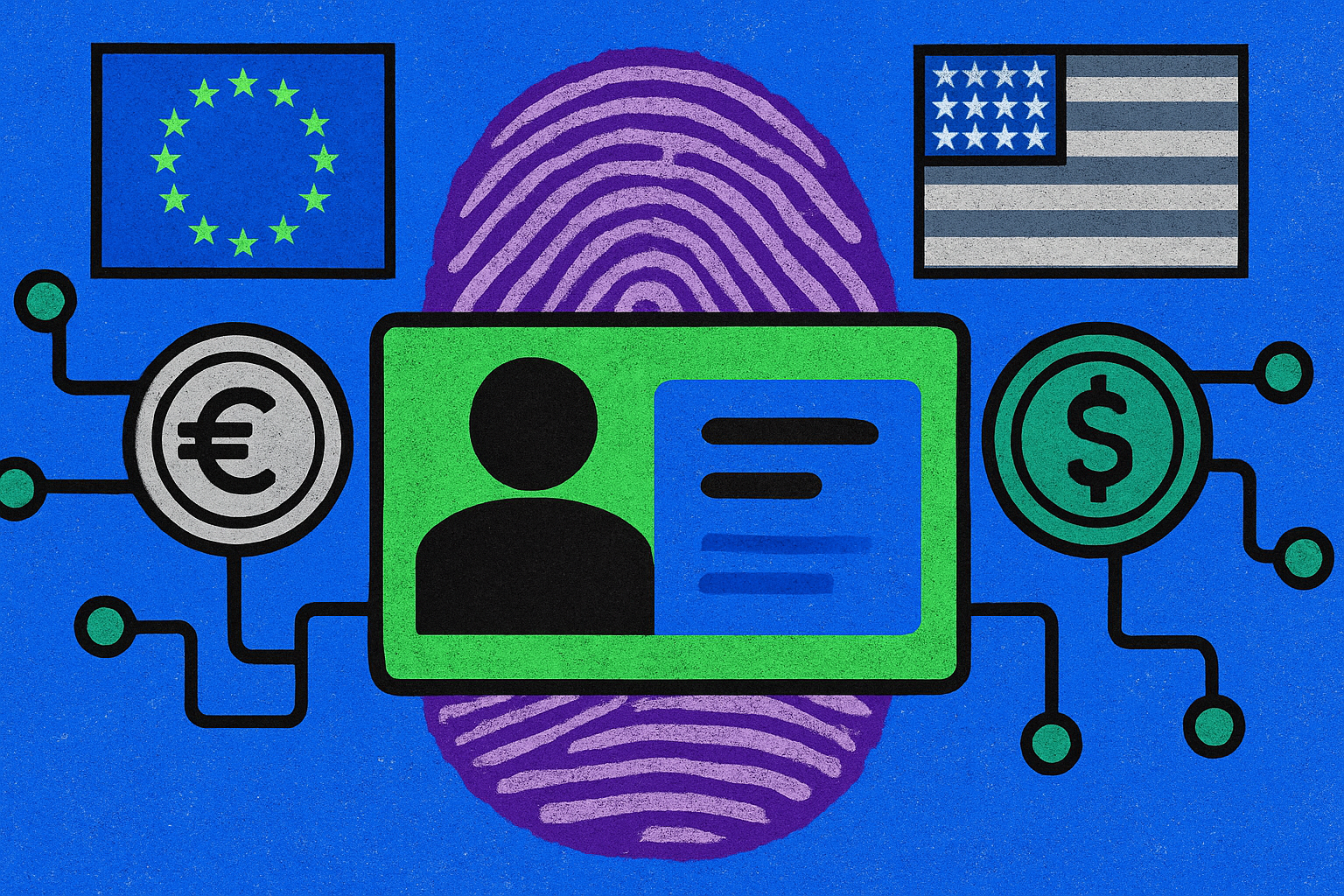
With the signing of the Guiding and Establishing National Innovation for U. S. Stablecoins (GENIUS) Act on July 18,2025, USD stablecoin compliance has entered a new era. Legal professionals advising issuers, exchanges, and institutional users must quickly adapt to a regulatory landscape that is both more prescriptive and unforgiving than anything previously seen in the U. S. digital asset sector. The GENIUS Act is not just another incremental step – it marks a structural shift in how stablecoins are defined, issued, backed, audited, and policed at the federal level.

GENIUS Act: The New Pillars of USD Stablecoin Regulation
The GENIUS Act’s impact on USD stablecoin regulation in 2025 is sweeping. The law creates a clear taxonomy of permitted payment stablecoin issuers (PPSIs), restricting issuance to subsidiaries of insured depository institutions, licensed non-bank entities, and qualified foreign issuers. Decentralized or anonymous projects get a three-year grace period to comply or exit the market. This move effectively sidelines unregistered actors and signals regulators’ intent to close longstanding loopholes.
Backing requirements are now explicit: every dollar of circulating stablecoin must be matched by high-quality liquid assets – cash, Treasury bills, overnight repos, demand deposits, or shares in government money market funds. Algorithmic stabilization mechanisms and commercial paper are strictly prohibited as reserve assets. This approach aims to eliminate contagion risk from opaque or risky collateral pools that have previously rattled both crypto markets and policymakers.
Legal takeaway: Every client considering entry or expansion in the U. S. stablecoin market must now confront a rigid licensing regime with no tolerance for creative asset management or ambiguous reserve structures.
Transparency Mandates: Audits and Public Disclosures Go Mainstream
The GENIUS Act sets new standards for transparency that go well beyond prior state-level regimes or self-regulatory codes. Issuers face monthly disclosure requirements detailing both reserve composition and total outstanding supply – all made public for scrutiny by users and competitors alike. For PPSIs with over $10 billion in circulation, annual audits by U. S. -registered public accounting firms are now mandatory.
This transparency push is not just about optics; it’s designed to build trust with consumers while providing regulators with real-time tools to spot systemic risks before they metastasize. For legal professionals counseling clients on compliance strategy, this means robust internal controls around data collection and reporting will be non-negotiable – especially as enforcement actions ramp up in 2025-26.
AML and Sanctions: Stablecoin Issuers Become Full-Fledged Financial Institutions
A core innovation of the GENIUS Act is its explicit classification of stablecoin issuers as financial institutions under the Bank Secrecy Act (BSA). This triggers an array of anti-money laundering (AML) obligations previously reserved for banks and traditional payment providers:
- Comprehensive AML programs, including customer due diligence (CDD) and transaction monitoring
- Sanctions screening, with designated officers responsible for oversight
- The technical capacity to seize, freeze, or burn tokens when required by law
This means legal teams must work hand-in-glove with technical architects to ensure systems can actually deliver on these requirements without compromising user privacy or operational resilience.
The penalties for non-compliance are severe: up to $1 million per day for unregistered operation post-July 1,2025; individual liability for officers; plus criminal penalties including imprisonment for willful violations. For a deep dive into enforcement risk management strategies under the new law, see our guide on compliance and licensing implications here.
Custody Rules and Activity Limitations: A Narrow Lane for Issuers
The GENIUS Act sharply defines what PPSIs can – and cannot – do. Activities are limited primarily to issuing/redeeming stablecoins, managing reserves, providing custodial services, and related back-office functions. Most notably:
- No native yield offerings tied directly to holding USD-labeled stablecoins.
- No misleading government-style branding or tickers.
- No forced ecosystem lock-in via restrictive terms of service.
- No commingling of user assets except under tightly controlled exceptions.
This narrows business models but also clarifies legal exposures – reducing ambiguity around what constitutes permissible activity versus regulatory arbitrage.
For legal professionals, this means advising clients on not just what is allowed, but what is now categorically off-limits. The GENIUS Act’s prohibitions on yield products and deceptive marketing are direct responses to past abuses and regulatory gray zones. Any attempt to circumvent these boundaries will likely trigger swift enforcement action, particularly as the SEC and Treasury ramp up joint oversight efforts in 2025 and beyond.
GENIUS Act Compliance Essentials for Stablecoin Issuers
-

1. Issuer Eligibility & Licensing: Only Permitted Payment Stablecoin Issuers (PPSIs)—including subsidiaries of insured depository institutions, licensed non-bank entities, and qualified foreign issuers—can issue USD stablecoins. Decentralized issuers must transition within three years.
-

2. 1:1 Reserve Backing with High-Quality Assets: Every USD stablecoin must be backed one-to-one with liquid assets such as U.S. dollars, Treasury bills, overnight repos, demand deposits, or government money market fund shares. Commercial paper and algorithmic mechanisms are banned.
-

3. Monthly Transparency & Annual Audits: Issuers must publish monthly public disclosures of reserve composition and outstanding coins, plus undergo annual audits by U.S.-registered public accounting firms if circulation exceeds $10 billion.
-

4. Robust AML & Sanctions Compliance: All issuers are classified as financial institutions under the Bank Secrecy Act, requiring comprehensive AML and sanctions programs, officer oversight, and the ability to block or freeze unlawful transactions.
-

5. Segregation & Safekeeping of Assets: Stablecoin reserves must be segregated from other assets, with strict limits on commingling, and issuers are restricted to issuing, redeeming, and custodial activities.
-

6. Activity Prohibitions & User Protections: Issuers cannot offer native yield, use misleading names, enforce non-competes, or require use of their coin for platform access. Only financial institutions may issue stablecoins.
-

7. Severe Civil & Criminal Penalties: Non-compliance can result in up to $1,000,000 per day in civil fines, and criminal penalties include up to $5,000,000 in fines and 10 years imprisonment for willful or repeated violations.
Another critical factor is the requirement that all asset backing for stablecoins be strictly segregated. Commingling of reserves or user assets, long a source of risk in both traditional finance and DeFi, is now a clear-cut violation except for narrow, regulator-approved exceptions. Legal teams must ensure that operational processes, custody agreements, and reserve management structures are airtight to avoid regulatory scrutiny.
Transition Periods and Penalties: No Room for Error
The three-year grace period for decentralized or anonymous issuers is perhaps the most strategic window in the new law. It offers a finite timeline for projects to either pursue licensure or wind down U. S. -facing operations. Legal professionals should prioritize transition planning for these clients, including entity restructuring, jurisdictional analysis, and robust documentation of compliance milestones.
For those who miss the deadline or operate outside the new framework, the penalty regime is unprecedented in its severity: $1,000,000 per day civil fines for unregistered activity post-July 1,2025; personal liability for directors; and criminal penalties up to $5 million and 10 years imprisonment for egregious violations. This signals a zero-tolerance policy reminiscent of past financial reforms, except with far greater speed and digital transparency.
Ultimately, the GENIUS Act’s architecture leaves little ambiguity: compliance is not optional or negotiable. The law’s explicit preemption of state-level licensing further streamlines oversight but also raises the stakes for federal adherence. As enforcement actions begin to shape industry norms in late 2025 and early 2026, proactive legal guidance will be essential, not just to keep clients out of trouble but to help them seize first-mover advantages as compliant issuers.
Strategic insight: The firms that invest early in comprehensive GENIUS Act compliance, across licensing, reserves management, transparency reporting, AML integration, and custodial architecture, will define the next era of stablecoin leadership in U. S. markets.
For more detailed analysis on how these changes impact specific business models, whether you’re advising fintech startups or global banks, see our expanded coverage at GENIUS Act 2025 Compliance Guide and GENIUS Act Impact on Issuers and DeFi.




